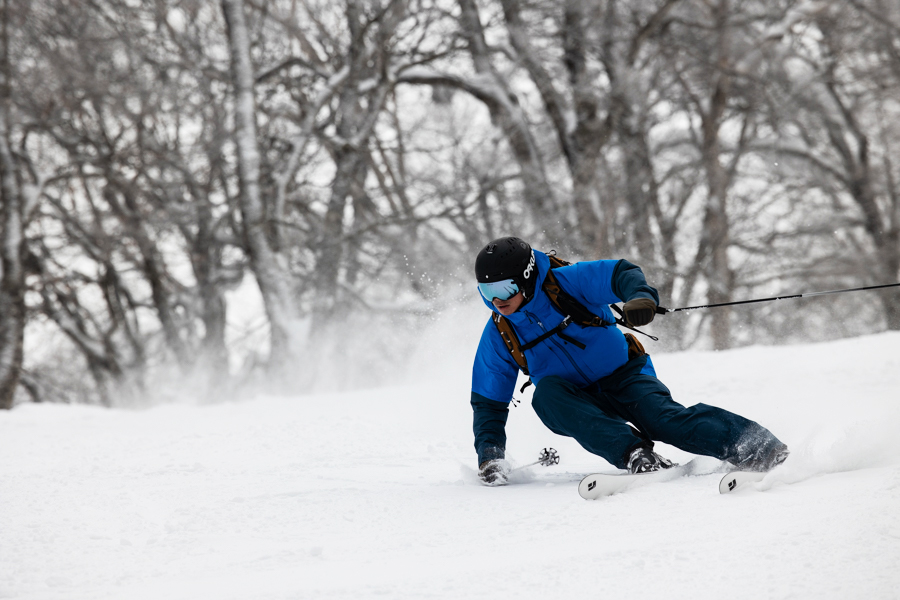Interviewer/Risa Obinata Photo/Hiroshi Suganuma
Click here for the ![]() part
part
INDEX
Nozawa Onsen green season business where flowers bloom one after another
──That's how Greenfield started.
is not it. At first, I didn't think much about the business, so I wanted to build a tree house, so I started making it with my friends. He said that he would put his hand into a rough cedar forest and thin it out to make a deck using the wood. Since we had a comfortable space, we expanded it little by little and opened it as a private campsite limited to one group per day in 2016.
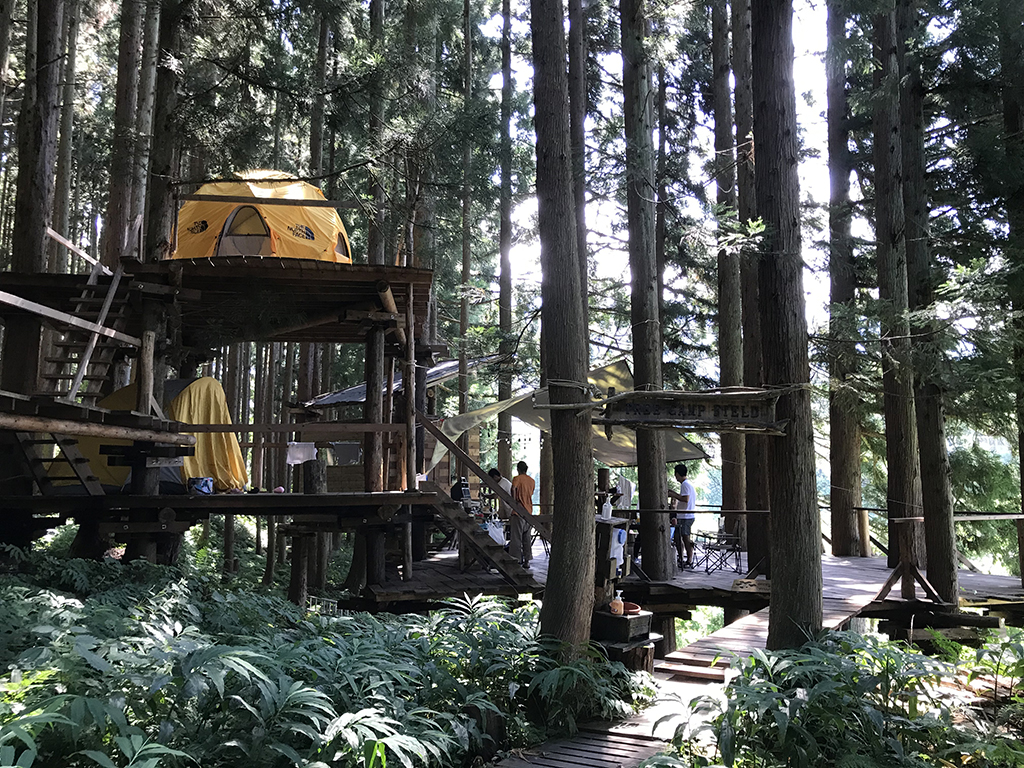
──You can not only stay but also experience nature, right?
yes. There is a green farm where you can enjoy organic vegetables right under the tree house, and guests can harvest freely. We also organize seasonal events such as rice planting in the spring and harvesting in the fall, and SUP (stand-up paddle board) tours at Lake Hokuryu (*1) are also popular.
──When did Kenji start SUP?
It's 2009, isn't it? I used it in my training when I was a ski cross player. After that, when I went down the Chikuma River on SUP for the first time, it was so interesting that I decided to make this a service as well.
──You also launched a SUP brand.。
yes. When thinking about a SUP tour, we have to prepare about 10 vehicles to rent to customers. At that time, we didn't have an ideal brand yet, so we decided to make our own SUP. My business partner was making fixie bikes, so in 2015 I launched it under the name PEAKS5 while researching various things.
──The idea of making one if it doesn't exist is novel. What is the difference between other SUP brands and PEAKS5?
At that time, the main SUP field was the sea. We are mountains, but we have lakes and rivers near Greenfield. There are many riversides and lakesides around the campsite, so I thought of connecting camping and SUP. An inflatable SUP that can be folded compactly is easy to take anywhere, and we travel to various places by ourselves and shoot PVs to convey the appeal of SUP.
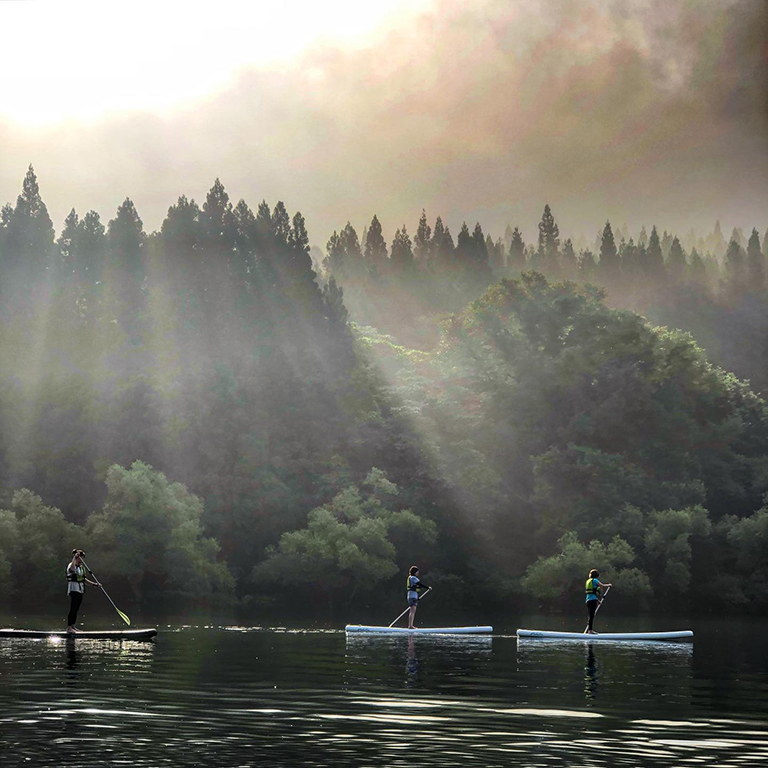
──Where was the most impressive trip in SUP?
Shimanto River in Kochi. I have been going there for 4 years in a row. Anyway, the water is very clean, there are no private houses around, and we row 30 to 40 km where truly magnificent nature remains. In the first year, it was a project with The North Face, and from the second year, we brought along Greenfield customers and held a one-night, two-day SUP camp loaded with camping gear and food. At that time, the term SUP camp didn't exist yet, so I think I was able to propose a way to enjoy it.
──You held a SUP event at Lake Hokuryu this fall too.。
I agree.
This was my first attempt, but in September, I teamed up with SUP racer Kenny Kaneko to hold a SUP race event that anyone can participate in at Lake Hokuryu. Originally, Kenny used to come to Nozawa Onsen often, but due to the coronavirus, all tournaments were cancelled, so we decided to do something together. This time, quite a few SUP racers gathered from all over the country, but next year we are thinking of making it a "RUN & SUP" so that more people from Nozawa can participate. There is Kosuge Shrine at the end of Lake Hokuryu, so it's like running to the inner shrine and going around the lake. Then, local cross country players can also play an active part.
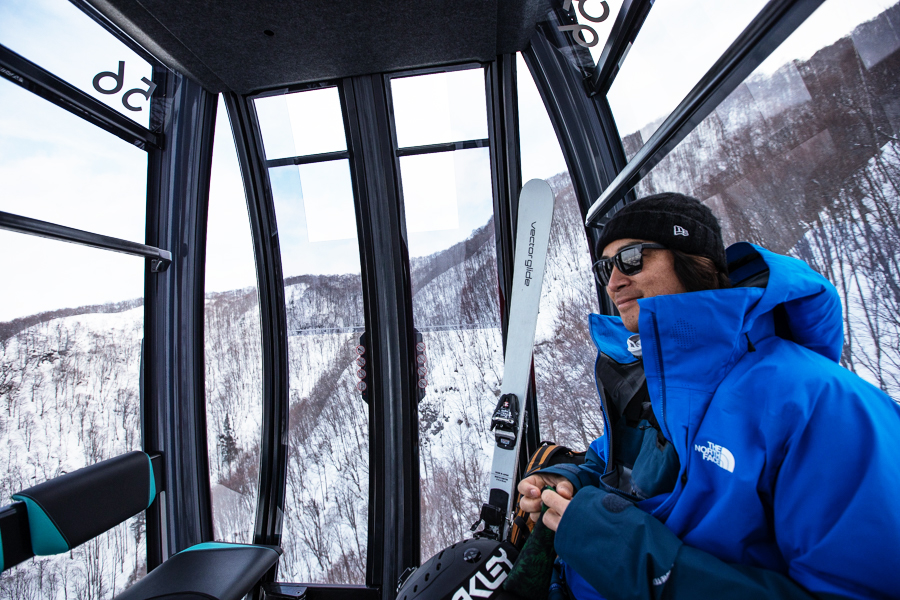
With a new companion named Vectorglyde
──After retiring, how did you think about winter activities?
I just wanted to ski.
Around that time, I was asked if I would be interested in helping out with Vectorglyde. Up until then, I had also been indebted to overseas brands, but I felt uncomfortable with the fact that it was not a direct way to convey what was decided in my home country to the customer through an intermediary. At that time, PEAKS5 was also launched, so I was very interested in making things for use in the field. There's something very interesting about being able to directly convey what you're working on to your customers.
──Were you originally interested in making skis?
I've had the privilege of being a ski test tester for ski magazines several times before. I test drive about 80 skis from various manufacturers and write a report. Riding that much will help you figure out what length, shape and flex suits you. So, at that time, I had an image of my ideal skiing with these numbers. There were no skis on the market with the numbers I wanted, so when I decided to develop skis with Vector, I put that experience to good use.
──Making a prototype based on that number, what will be the ideal ski? ?
Surprisingly, I was able to do it quite well from the first one. After repeated fine adjustments, the mold was decided on about the fifth one. Of course, if I hadn't made skis from scratch, it wouldn't have gone like this, but thanks to Mr. Akiba's long experience, everything went smoothly. The ski that was born from that is a model called Polav. The concept is a ski that allows you to enjoy a variety of situations with just one ski.
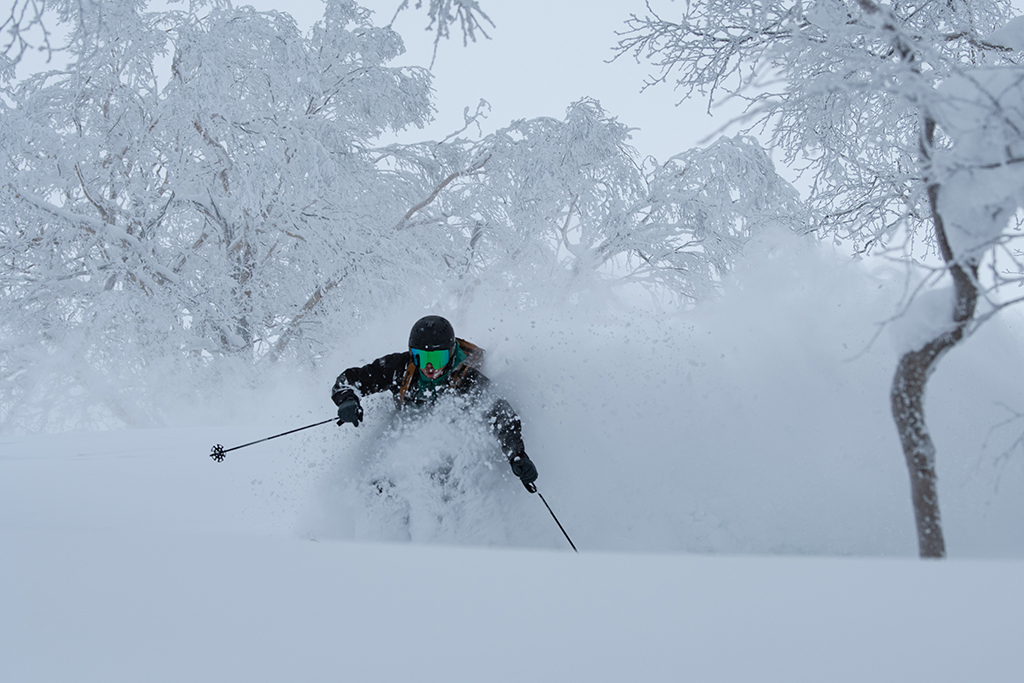
──Do you feel different when you put on the skis you were involved in developing?
Not at all. Especially when I guide customers, the feeling is different. I can express myself in my own words, and it's not just the end of the sale, but rather the idea of how to operate the skis to maximize their performance.
──You've been involved with Vectorglide for four years now, how about trying it yourself?
It is interesting. The things I want to do come up one after another and I can't even take a break. It's on all the time. There are no boundaries between rest and work. But I think it's interesting to live a life where it's always on.
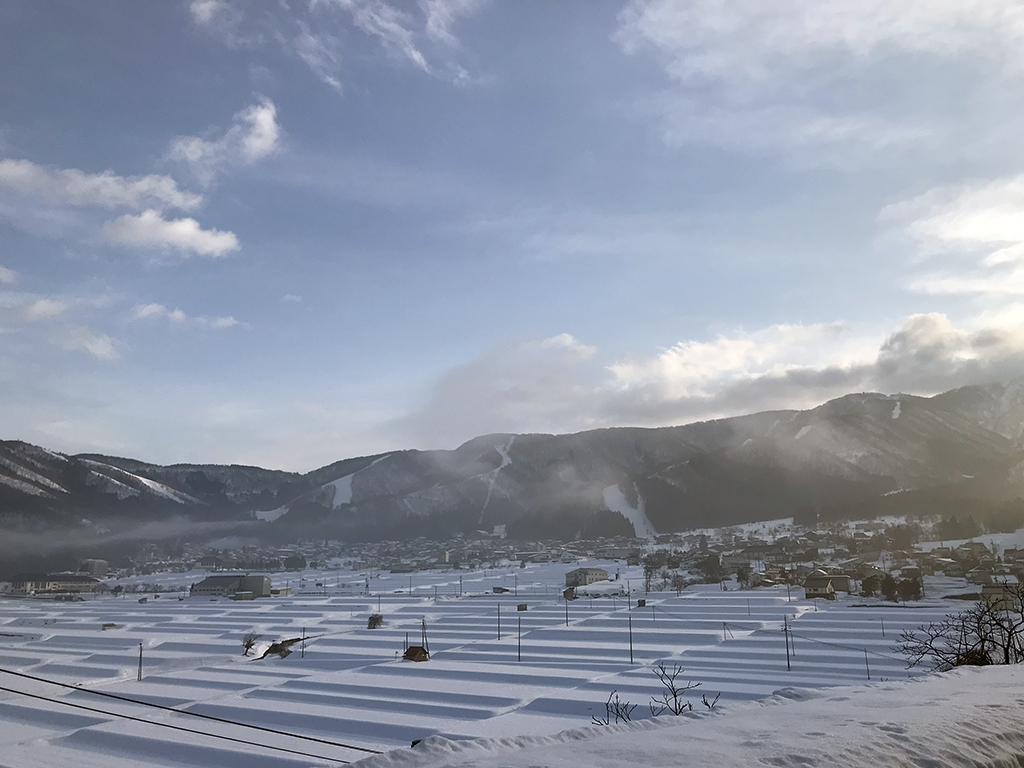
What is the value of Nozawa Onsen as a tourist destination?
──In June, he became the chairman of the Nozawa Onsen Tourism Association. What kind of activities are you doing?
As chairman, I show up in various places, go to meetings, and say hello.
I value the fact that I can listen to opinions by getting close to older people, such as village chiefs and ski resort presidents. For the first year or two, it's more about grasping the current situation rather than doing something new. Isn't it the same in the backcountry? It's not just about your own skiing, but just like determining the line after grasping the conditions and circumstances of the day. I'm here. If you ask people above you about the background and past, they will tell you a lot, and if you can build a close relationship, I think it will be easier to gain their understanding when you start something new.
──That's very important. What issues does Nozawa Onsen Village face as a tourist destination?
Is it the lack of successors to the inn or the lack of customers during the green season?
But I would like to take a proper survey once, wondering how satisfied the business operators are. If you are satisfied with the current situation, it may be better to improve the quality instead of thinking only about attracting customers. The number of visitors to the ski resort before COVID-19 was about 420,000, and if the number of visitors exceeds this, customer satisfaction may drop, so admission will be restricted. If there is a certain amount of customers during the green season, I think we can afford it. Lately, I've been thinking about it all the time, but it would be nice if I could increase the wealth of the people who live there.
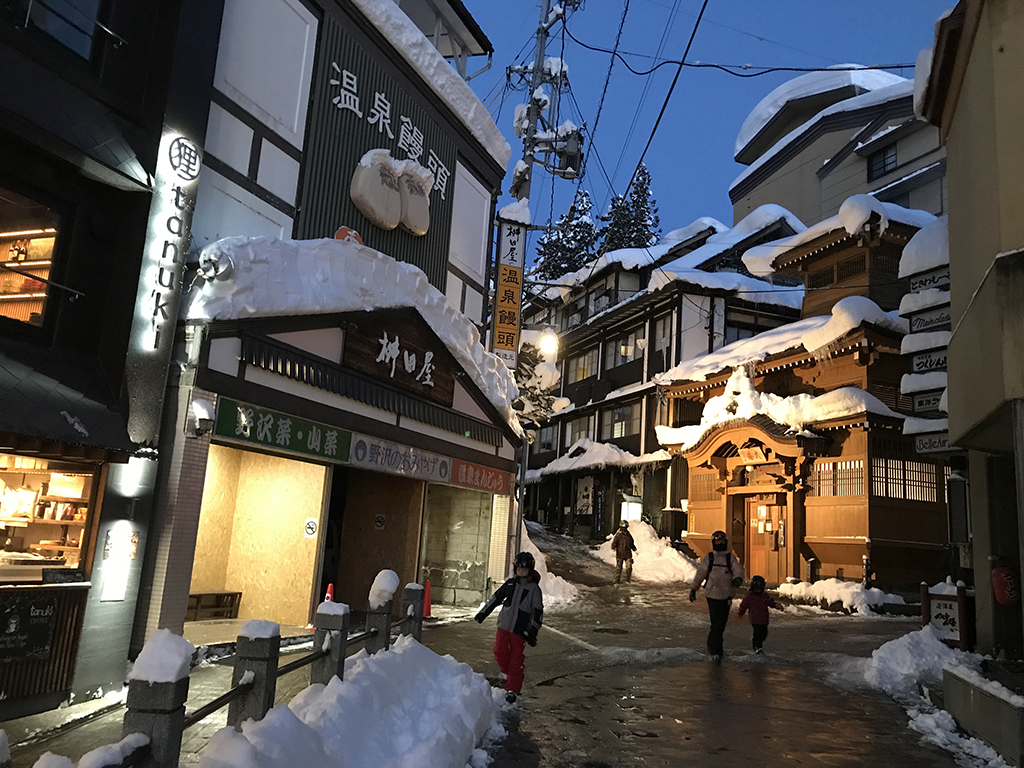
──How rich are the villagers?
The great value of Nozawa Onsen is the culture of outdoor baths.
I think the pioneers who started the hot springs, which were originally used by themselves, are amazing and decided to open them to tourists because they are so good. That's the mindset of Nozawa as a tourist spot, because I'm rich and satisfied, so I want to share that feeling with others. Recently, there are some people who say that they should lock the door because there are customers with bad manners, but in the end it means that they don't trust people. Nozawa's biggest branding is the generosity that anyone can join. So depending on whether the residents are satisfied with their lives or not, the services we can provide will change, and I think it will be a fulfilling tourist destination.
──What kind of concept was the life farming camp that you started this fall?
Life Farming Camp is a two-night, three-day camping event that we have planned for the first time this autumn, with the introduction of Ryotaro Yao of Nozawa Onsen Lodge, in collaboration with an organizer in Tokyo.
I play a role of a local coordinator, and with the theme of "knowing the water cycle and mountains," this is a camp where you can actually experience the richness of nature and food in Nozawa Onsen. The abundance of water and hot springs is thanks to the beech forest, so you can walk through the beech forest with a guide, cook outdoor meals with a local chef, and practice Zen meditation at Kenmeiji Temple, the birthplace of Nozawana. The contents were designed so that they could interact with the villagers, such as learning about the local climate and going out to pick mushrooms with a mushroom expert.
──What kind of customer is your customer?
This year, as a test, I asked my acquaintances, so most of them are from Tokyo. People from various industries, such as music-related people and the president of an electric power company, have participated, and I want to come ski in the winter! It was an event that really spread. I asked the village chief and my father to participate only in the meal. Since it's a small village, it's easy to think that Kenji is doing something with people in Tokyo, so I was conscious of getting the people of the village involved as much as possible.
──It must have been a valuable experience for the guests as well, which they could not have had on a simple trip.。
From now on, I would like to propose a trip through sports.
Skiing and hot springs are everywhere, right? Taking it a step further, I thought it would be good to use the concept of health tourism and wellness tourism. I used to be an athlete myself, so I know that the basics of building your body are the three elements: exercise, rest, and diet. Nozawa Onsen is all high quality and has all three resources. I think the most important thing is to raise your own immunity, not to mention the corona measures at ski resorts and restaurants. Rather than being exhausted and stuck at home all the time, I would like to suggest a trip that boosts your immune system.

The future of skier Kenji Kono
──What are you doing this winter?
It feels like going around the country with Vector Glide's Glide On Groove (*2) and doing user camps.
From this year, we have a directly managed store and an online shop (*3), so it has become very smooth to guide customers. You can now immediately purchase the skis that you liked at the test ride event on the spot. Also, I've been running a riding academy for 3-4 years now, and it's become so popular that reservations fill up within 24 hours after the information is released.
──What kind of lessons do you teach at the Riding Academy?
It's an orthodox technique of skiing. The main points are summarized in 4 points and taught as a technique that can be used on any slope and condition. It's important to cover up with technique as my muscle strength declines year by year.
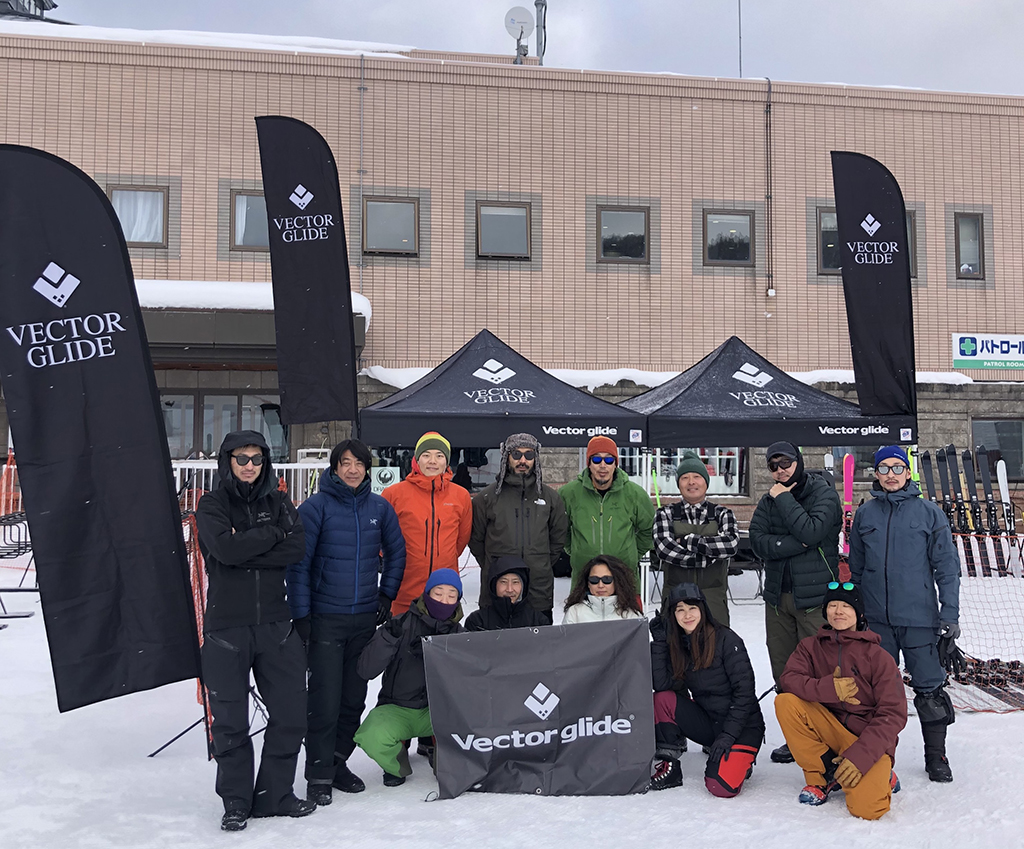
──It's special for customers to be able to learn directly from the person who made the skis.。
There are things that can be communicated through products, and it is also interesting for us to be able to interact with customers as a whole. When I was in my twenties, I thought it was fun to skate by myself, but now my enjoyment has diversified. I really like guiding people who are skiing for the first time.
──It's wonderful to be happy not only with your own skating, but also with other people's progress. Finally, do you have any goals or challenges that you want to challenge as a skier in the future?
I don't really have a question about which mountain I want to skate these days.
When I work in the ski field, I often see people who are so busy that they can't stand on the field in the winter. I want to aim for All the activities of the green season are also connected, and there are many connections with people other than skiing. I think it's my role to convey the charm of skiing to such people and collaborate with them. It would be great if we could convey the appeal of skiing from various angles.
❖ Kenji Kono's latest riding video
*1 [Lake Hokuryu] A
lake close to Nozawa Onsen. A quiet lake surrounded by mountains, perfect for SUP beginners.
*2 [Glide On Groove]
A test ride event where you can experience from the standard Vector Glide model to the latest model. This season will be held in 5 locations nationwide. https://www.vectorglide-japan.com/single-post/glide-on-groove-registration
*3 [Online Shop]
Online shop WHITE TIME where you can purchase all Vector Glide models and related goods.
Under the same name, a directly managed store will open in Tokyo in June 2020. https://www.vectorglide-japan.com/shop
nozawa green field
Official website https://www.nozawagreenfield.com/
https://www.facebook.com/nozawagreenfield/
https://www.instagram.com/nozawagreenfield/
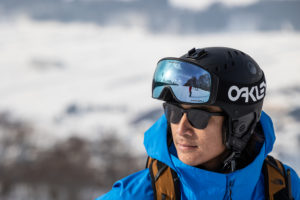
Interviewer/Editor + Writer
Lisa Obinata
Born in Tokyo in 1980. After graduating from Waseda University's Second Literature Department, she spent 13 years working at a publishing company as an editor for ski magazines such as "Ski" and "POWDER SKI". Since 2013 she is the editor-in-chief of the magazine. She went independent in 2015 and launched the snow culture magazine "Stuben Magazine" with photographer Yoichi Watanabe. In 2020, she moved from Shonan to Iiyama City, Nagano Prefecture, and is practicing a natural lifestyle that is close to the snowy mountains and nature.

